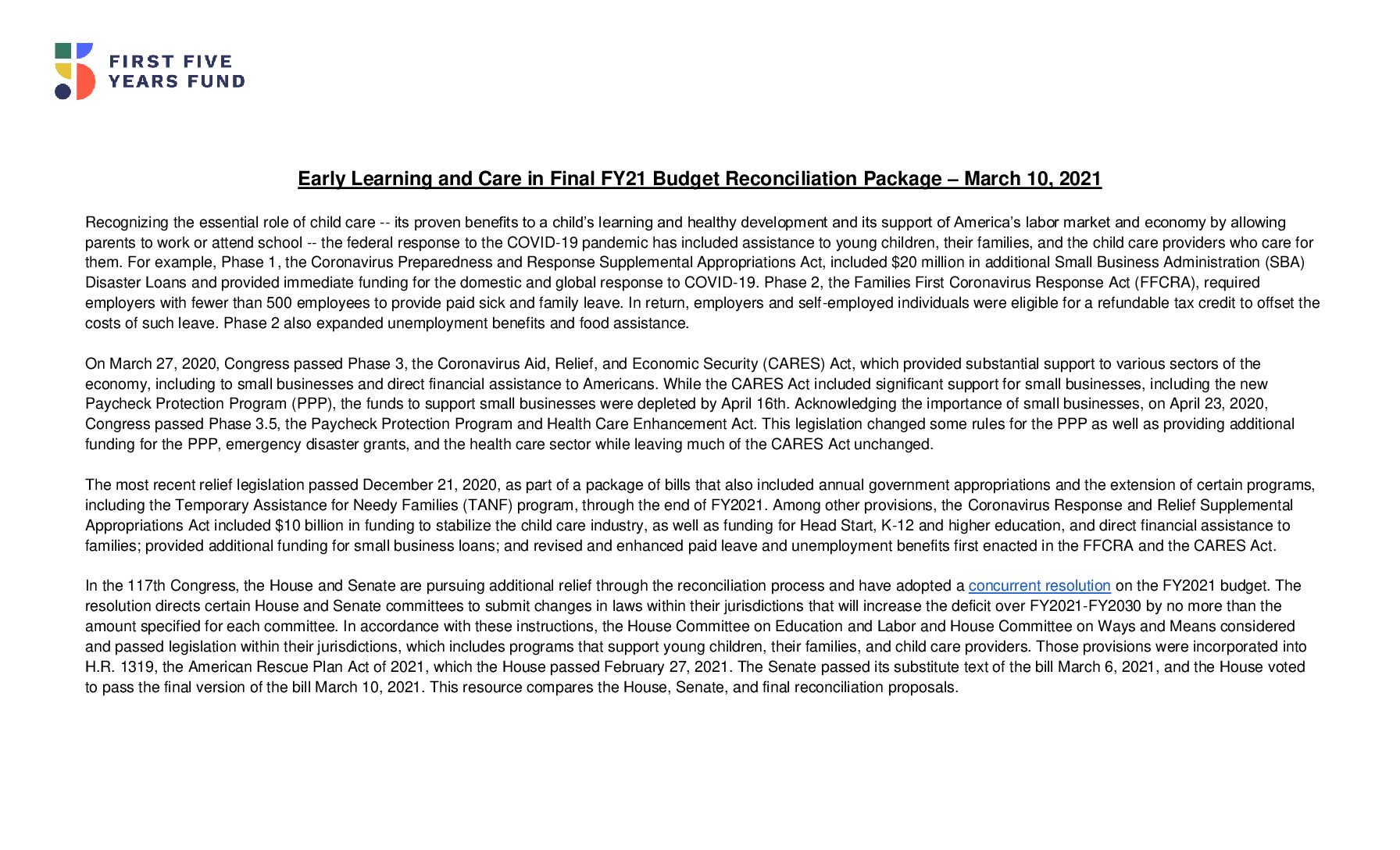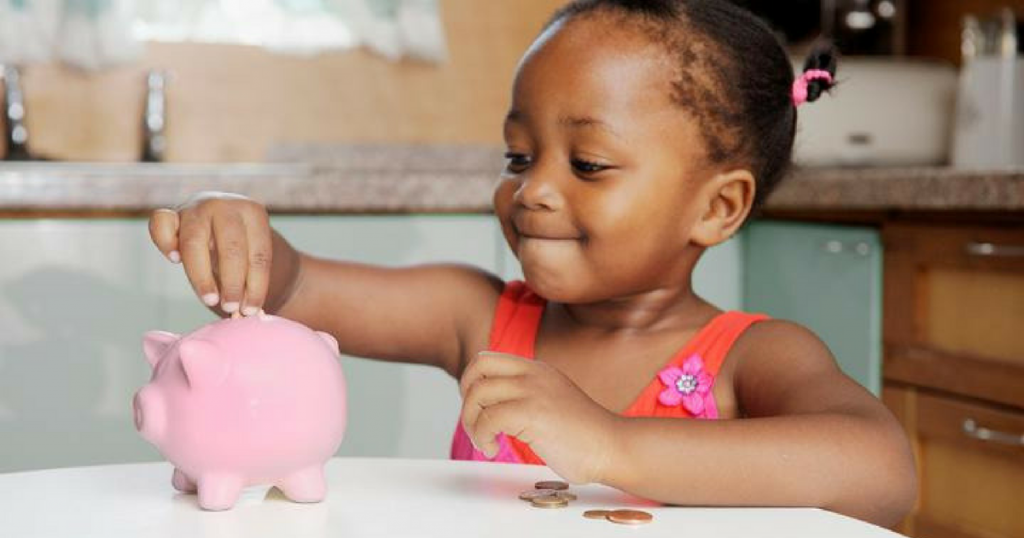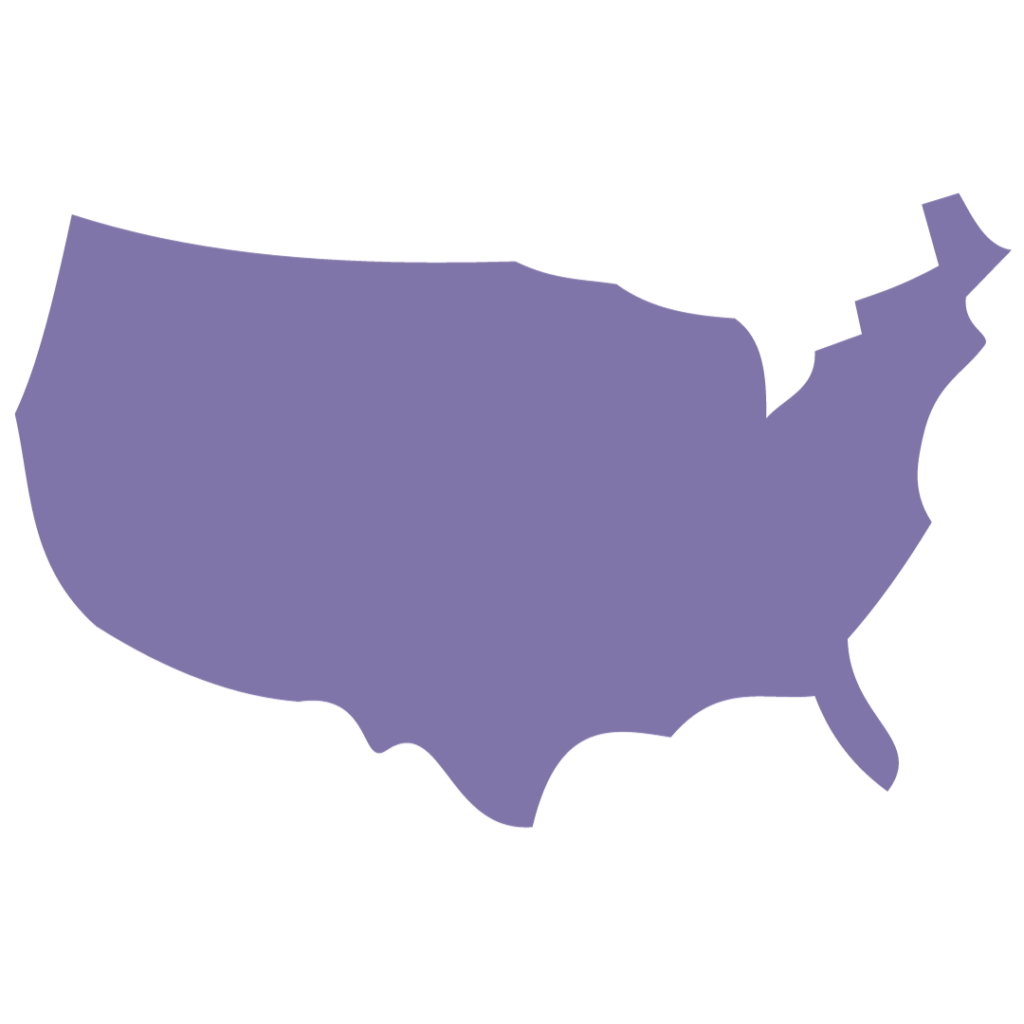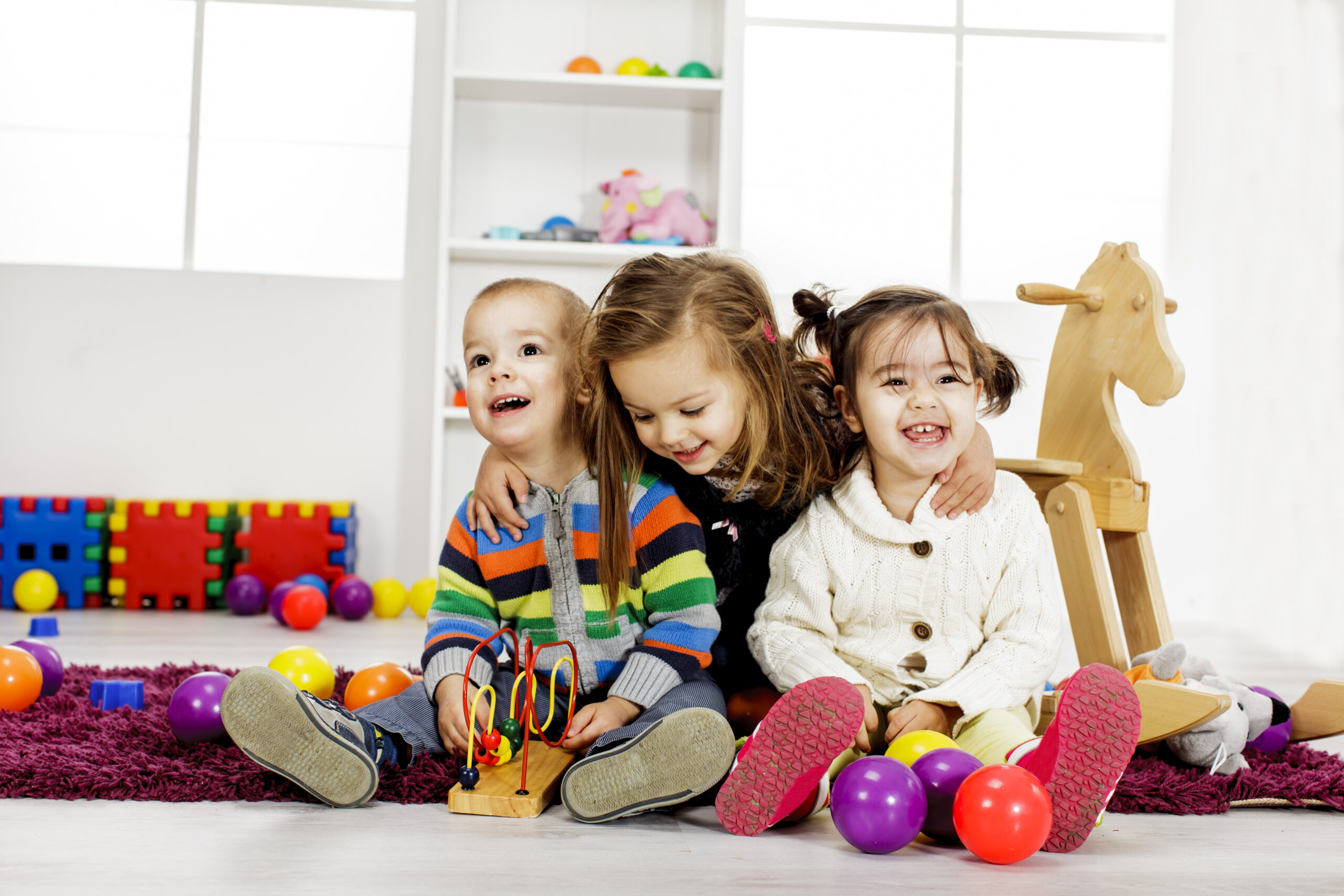Comparing Early Learning and Care Provisions in the House, Senate, and Final FY21 Budget Reconciliation Packages
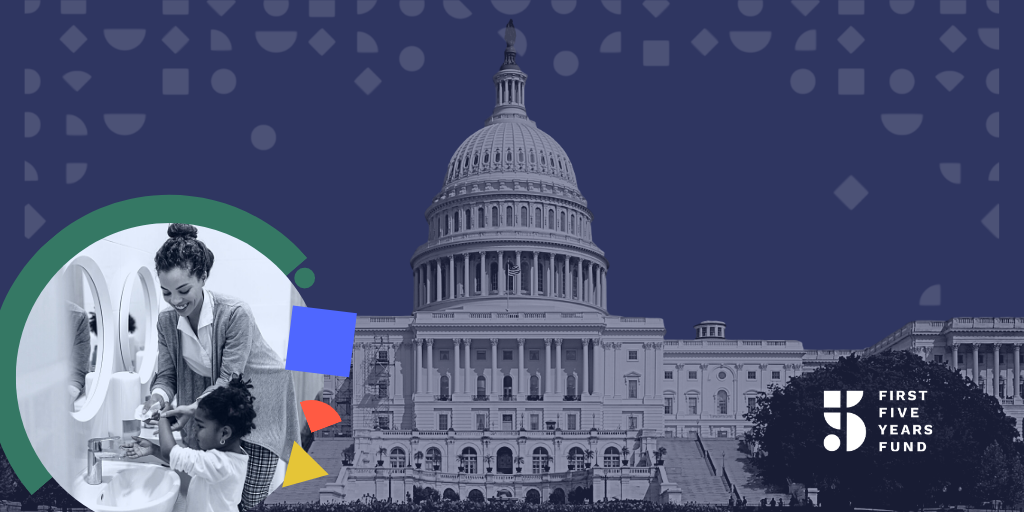
Recognizing the essential role of child care — its proven benefits to a child’s learning and healthy development and its support of America’s labor market and economy by allowing parents to work or attend school — the federal response to the COVID-19 pandemic has included assistance to young children, their families, and the child care providers who care for them.
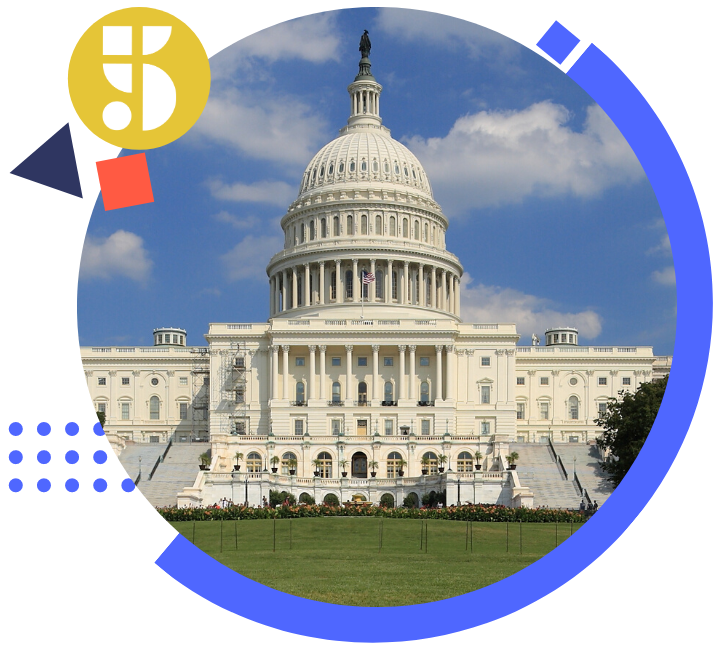
For example, Phase 1, the Coronavirus Preparedness and Response Supplemental Appropriations Act, included $20 million in additional Small Business Administration (SBA) Disaster Loans and provided immediate funding for the domestic and global response to COVID-19. Phase 2, the Families First Coronavirus Response Act (FFCRA), required employers with fewer than 500 employees to provide paid sick and family leave. In return, employers and self-employed individuals were eligible for a refundable tax credit to offset the costs of such leave. Phase 2 also expanded unemployment benefits and food assistance.
On March 27, 2020, Congress passed Phase 3, the Coronavirus Aid, Relief, and Economic Security (CARES) Act, which provided substantial support to various sectors of the economy, including to small businesses and direct financial assistance to Americans. While the CARES Act included significant support for small businesses, including the new Paycheck Protection Program (PPP), the funds to support small businesses were depleted by April 16th. Acknowledging the importance of small businesses, on April 23, 2020, Congress passed Phase 3.5, the Paycheck Protection Program and Health Care Enhancement Act. This legislation changed some rules for the PPP as well as providing additional funding for the PPP, emergency disaster grants, and the health care sector while leaving much of the CARES Act unchanged.
The most recent relief legislation passed December 21, 2020, as part of a package of bills that also included annual government appropriations and the extension of certain programs, including the Temporary Assistance for Needy Families (TANF) program, through the end of FY2021. Among other provisions, the Coronavirus Response and Relief Supplemental Appropriations Act included $10 billion in funding to stabilize the child care industry, as well as funding for Head Start, K-12 and higher education, and direct financial assistance to families; provided additional funding for small business loans; and revised and enhanced paid leave and unemployment benefits first enacted in the FFCRA and the CARES Act.
In the 117th Congress, the House and Senate are pursuing additional relief through the reconciliation process and have adopted a concurrent resolution on the FY2021 budget. The resolution directs certain House and Senate committees to submit changes in laws within their jurisdictions that will increase the deficit over FY2021-FY2030 by no more than the amount specified for each committee. In accordance with these instructions, the House Committee on Education and Labor and House Committee on Ways and Means considered and passed legislation within their jurisdictions, which includes programs that support young children, their families, and child care providers. Those provisions were incorporated into H.R. 1319, the American Rescue Plan Act of 2021, which the House passed February 27, 2021. The Senate passed its substitute text of the bill March 6, 2021, and the House voted to pass the final version of the bill March 10, 2021. This resource compares the House, Senate, and final reconciliation proposals.
Subscribe to FFYF First Look
Every morning, FFYF reports on the latest child care & early learning news from across the country. Subscribe and take 5 minutes to know what's happening in early childhood education.
